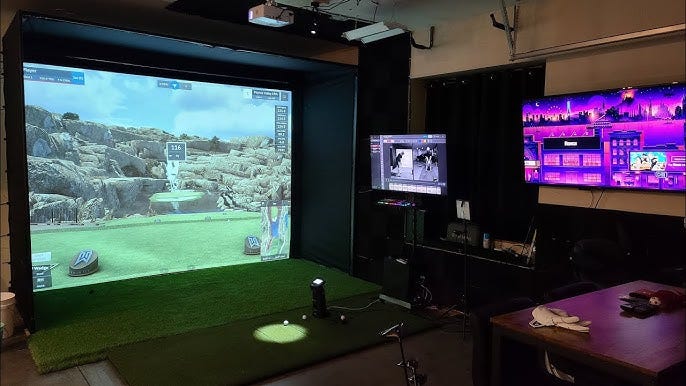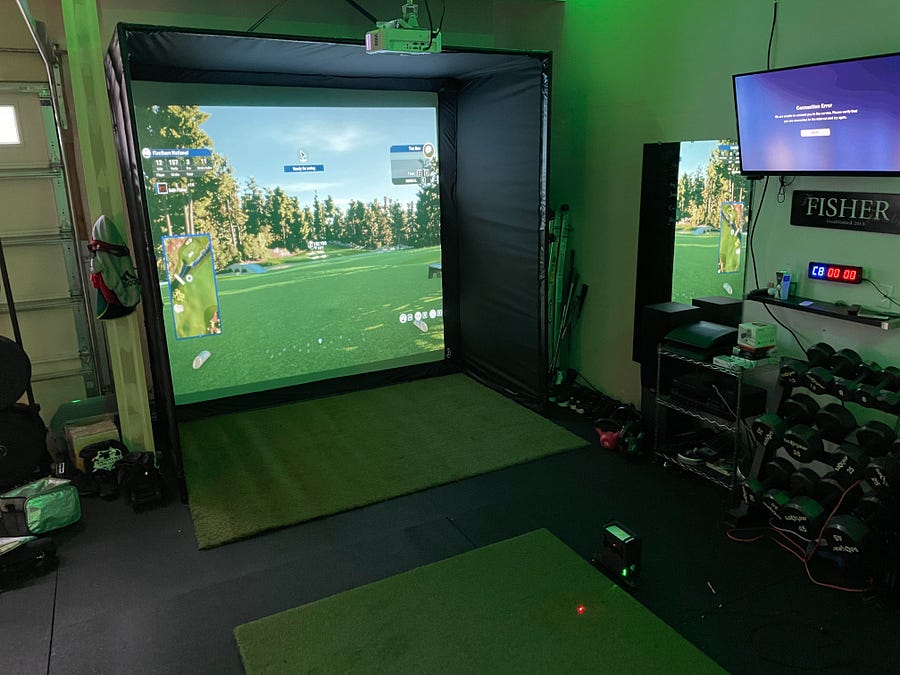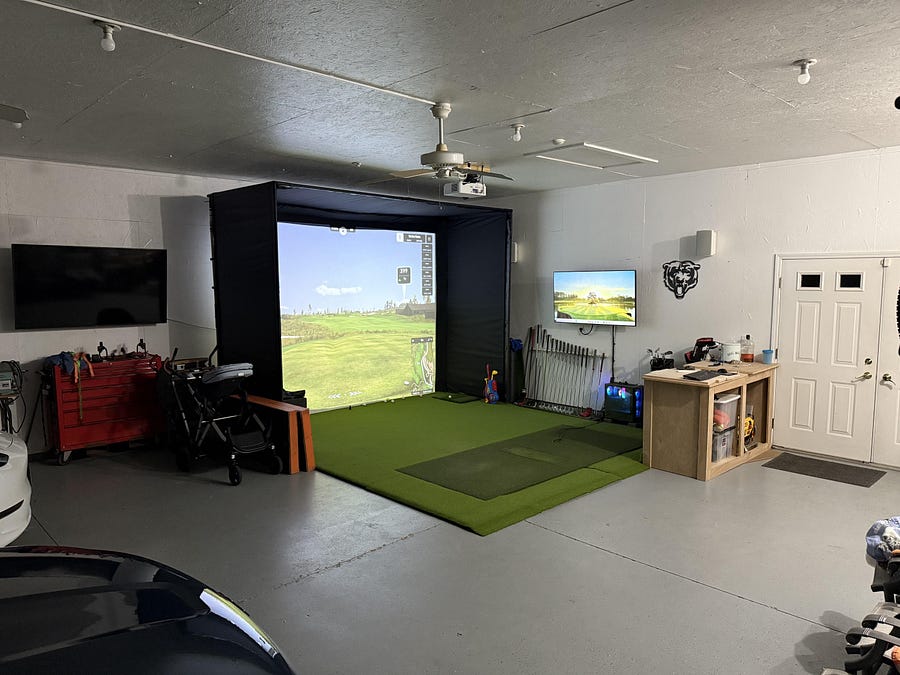Over the past few months, I got my hands on what many call the best golf simulators on the market. I set them up, hit real shots, tested the software, and paid attention to the stuff that doesn’t show up in promo videos. I looked at setup time, accuracy, playability, data depth, and how they hold up when you’re 50 swings deep trying to fix that stubborn slice.
Each one brought something different. But by the end of it, only one made me think, I could live with this thing long-term.
I started with the SkyTrak Plus SIG10 Golf Simulator , which is hands down one of the most recommended home systems out there. Once I fired it up, I understood why. It hits that perfect balance of data, reliability, and ease of use. The launch monitor is compact and doesn’t require a bunch of space or complicated setup.
The SIG10 enclosure feels sturdy, the turf is comfortable to stand on, and everything runs smooth right out the box. The software is user friendly and gives you shot tracking, club data, and full simulator play. I didn’t have to mess around with settings or recalibration. It just worked like you’d hope.
Next, I checked out the Trackman iO SwingBay Golf Simulator setup. This one screams commercial use. It’s ceiling mounted so nothing’s on the floor, which keeps your space super clean. The feedback from Trackman’s Virtual Golf 2 software is top notch. Shot tracking is fast, accurate, and smooth. It picks up everything you’d want to know. But it’s definitely not for casual golfers or first-time buyers. You’ll need the right ceiling height, room dimensions, and a solid budget. If you’re setting up a teaching studio or a simulator business, this one’s a professional-grade choice. For home users, it might feel like more than you actually need.
Then I tested the Foresight GCQuad with the SwingBay enclosure, and let me tell you, the accuracy is next level. This unit doesn’t just track your ball. It gives you club face angle, path, impact location, and spin data that you can actually use to make changes. The display is fast, and results are reliable no matter the lighting or space. If you’re all about data and precision, the GCQuad is your tool. The only tradeoff is its size and portability. It’s not something you move around lightly, but for in-depth training sessions, this is as detailed as it gets.

After that, I jumped into the Uneekor EYE MINI SwingBay Golf Simulator , and this was probably the biggest surprise. It’s smaller than the other monitors I tested but still delivers strong ball and club data. The dual-camera system holds its own against bigger setups, and it feels polished when paired with Uneekor’s software. It’s a great fit for smaller rooms or tighter home setups where you still want a serious simulator. You do need a capable PC to run it well, but once it’s dialed in, the EYE MINI can do a lot more than people expect.
Last was the Foresight Sports GC3 in the SIG10 enclosure, and what stood out here was flexibility. I used it indoors and outdoors without changing anything, and it worked exactly how I hoped. It boots quickly, tracks accurately, and gives feedback that’s easy to trust. Indoors it feels stable and dialed in. Outdoors it still reads shots without needing extra tweaks. The SIG10 enclosure makes this package feel like a real hitting bay, not just a net and mat setup. It’s ideal for someone who wants one monitor to handle everything.
So after all of that, which one would I keep?
It’s the SkyTrak Plus SIG10 . Not because it’s the flashiest or most expensive, but because it hits that sweet spot of quality, ease, and value. It feels complete. It doesn’t require a perfect room or complicated wiring. It’s ready when you are. You get the data that matters and the experience that feels good to use every day.
Out of the five I tested, it’s the one I would recommend to anyone looking for a solid all-around simulator setup for their home.



